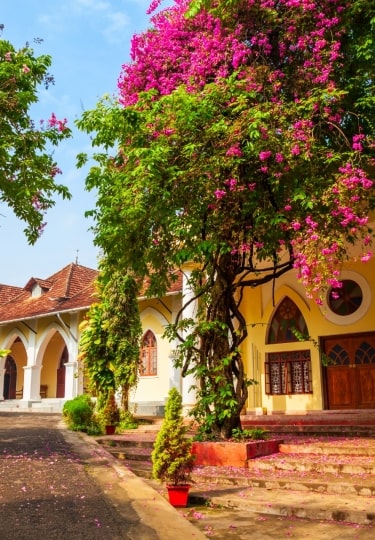Cultures collide in gloriously crumbling Kochi, basking on the shores of India’s tropical Malabar Coast. Mosques and synagogues sit side-by-side, while the architecture is reminiscent of 16th century Portugal, mixed with Dutch influences, and more than a whiff of British colonialism.
For centuries a trading port, Kochi today is a cultural and artistic hub and the third-biggest city in the southern Indian state of Kerala. The modern commercial center, Ernakulam, is a short distance from historic Fort Kochi and Mattancherry, where you’ll see some of the loveliest old buildings and old riverfront wharves.
Kochi is also close to the backwaters of Kerala, an intricate, 560-mile network of brackish canals, channels, and lakes dividing paddy fields, coconut palm groves, and sleepy villages. A dreamy day on a converted rice barge is one of the quintessential Kochi experiences.
Here are 12 things to do in Kochi.
Wander the Alleys of Fort Kochi
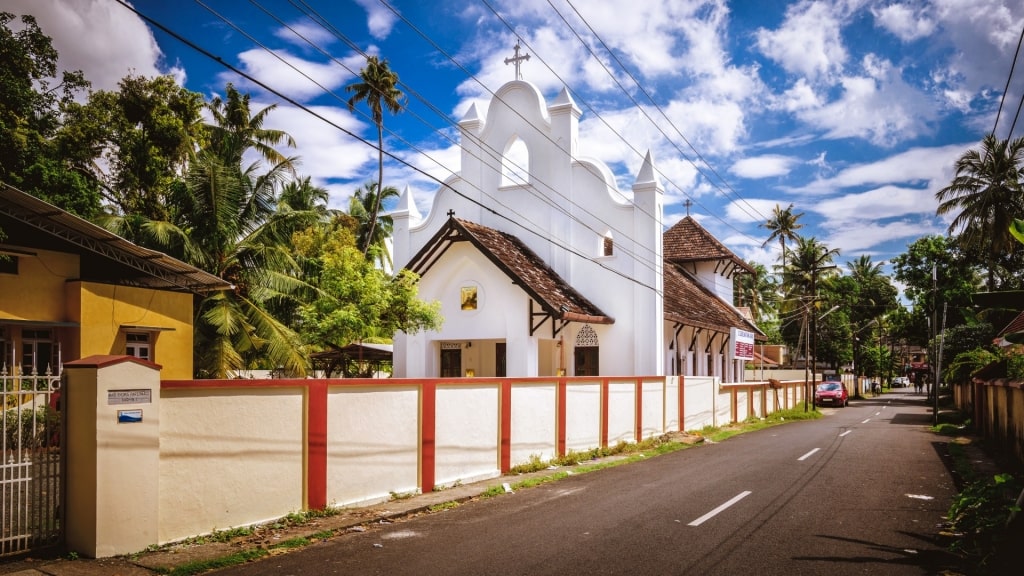
Fort Kochi
A short hop by ferry or road from Ernakulam, enchanting old Fort Kochi is a grid of colonial-style buildings and lanes with water on three sides. This is where the Portuguese built their first citadel in the early 16th century, which was later reinforced by the Dutch.
Little remains of the fortifications today, although a line of majestic rain trees traces the outline of part of the wall. Some of these trees are 200 years old and are an attraction in themselves.
There’s color everywhere in Fort Kochi, from the jewel-like shades of the saris worn by local women to the faded facades of the houses and lavish tropical blooms in every green space.
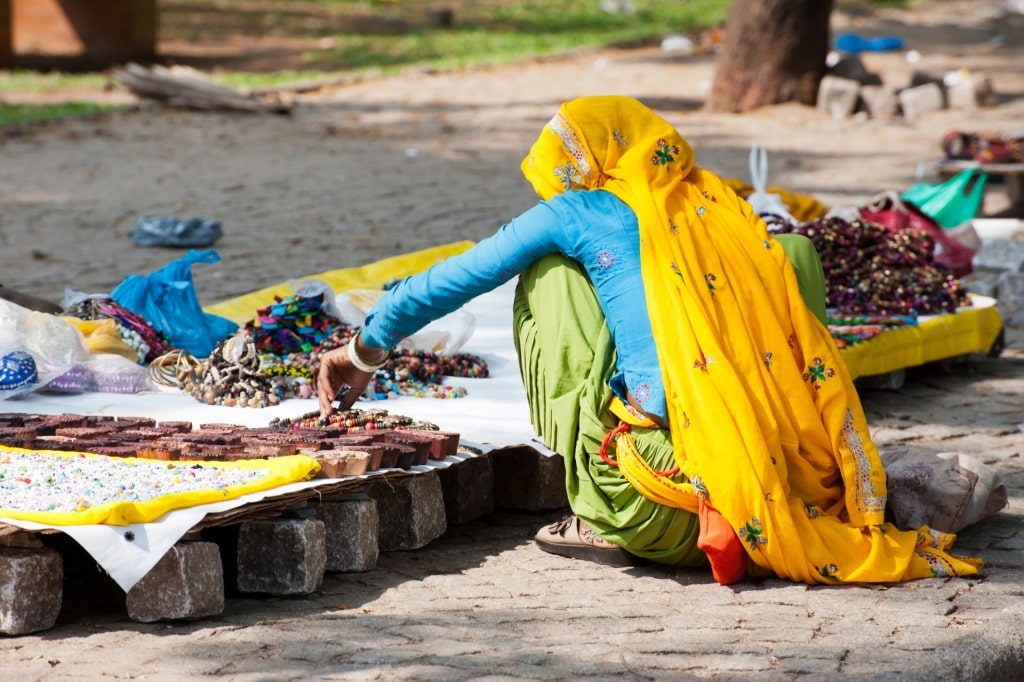
Fort Kochi
While there are plenty of buildings and museums to admire, spending time just roaming the streets and shopping for authentic Indian souvenirs is one of the best things to do in Kochi.
Galleries, tiny boutiques, spice stalls, and curio shops are a pleasant distraction, while tuk tuks, rickshaws and bicycles buzz back and forth.
You’ll find plenty of bars and cafés in which to relax and watch the world go by after your shopping spree. For high-end Indian cuisine with Mediterranean dishes sprinkled through the menu, make a reservation at the swish Malabar Junction, part of the heritage Malabar House Hotel in the city center.
Admire the Chinese Fishing Nets
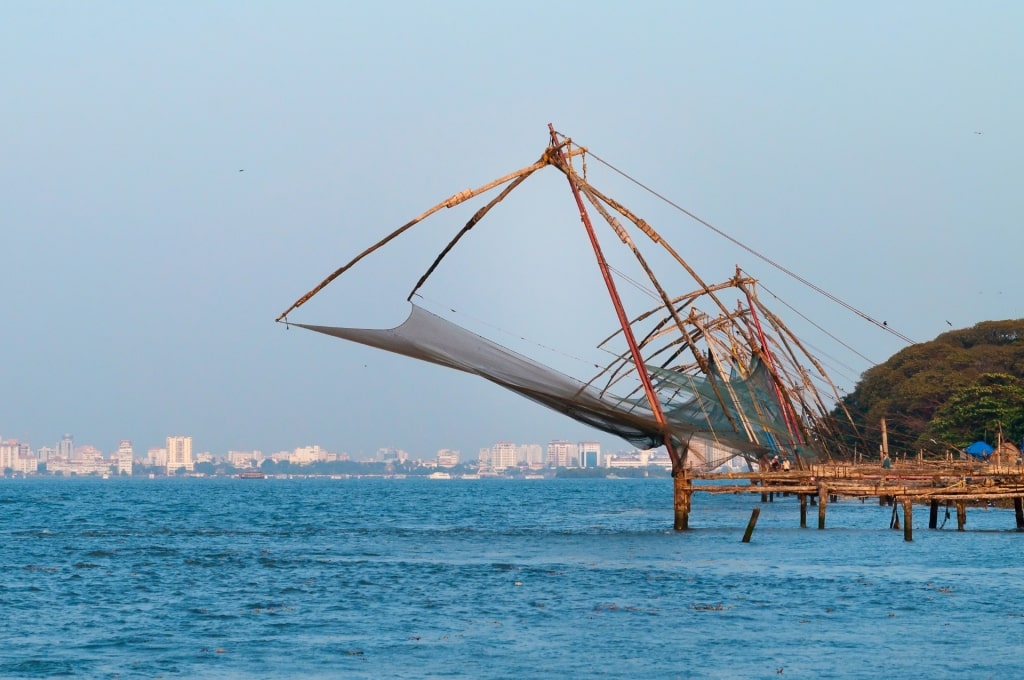
Chinese Fishing Nets
The vast Chinese fishing nets along the northern tip of the peninsula are a symbol of the city as well as being an impressive piece of engineering, and are one of the most important things to see in Kochi. They’re believed to date back as early as the 14th century and, as the name suggests, were introduced by the Chinese.
Each net is more than 30 feet high, suspended from a structure made of teak and bamboo, with a cantilevered pole balanced by stone weights and a series of ropes operated by four men.
Lights are hung from the net over the water to lure fish. Using ropes and weights, the net is submerged in the water, hoisted out full of the wriggling catch.
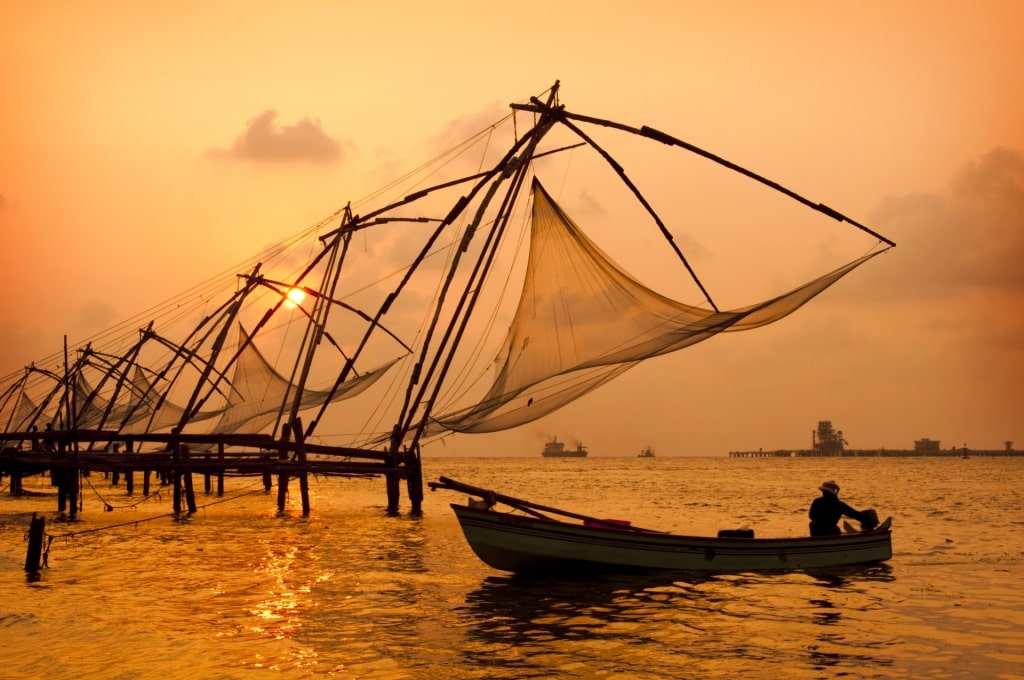
Chinese Fishing Nets
Sunset is without doubt the best time to photograph the nets, their spindly structures captured in silhouette against a fiery sky. Wander along Vasco da Gama Square, a pathway that leads to the nets, and absorb the atmosphere.
Read: Best Sunsets in the World
Uncover the History of St. Francis Church
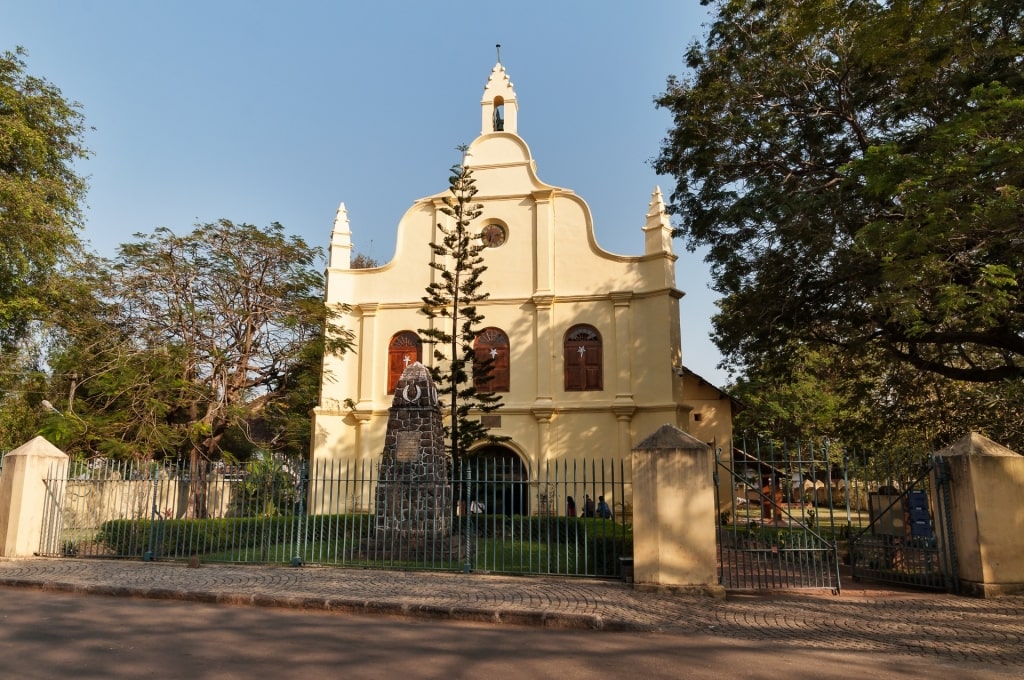
St. Francis Church
Standing next to the Parade Ground in Fort Kochi, this somewhat crumbling yellow church is believed to be the oldest European church built in India, constructed by Franciscan friars in 1503.
The original chapel was made of wood and mud but was rebuilt in 1516 and then altered by the Dutch in the 17th century and again by the British in the 18th.
You’ll see the elegantly gabled roof and the wood-carved pulpit, as well as an old Dutch baptism and marriage register from the early 19th century. Visitors of Dutch origin often come here as part of a quest to trace their roots.
Most visitors, though, come here to pay homage to the Vasco da Gama. The great explorer was the first Portuguese sailor to arrive in Kerala and died in Kochi during his third visit, in 1524. He was buried in St. Francis church, and although his body was later returned to Portugal, his gravestone remains.
Explore Mattancherry Palace
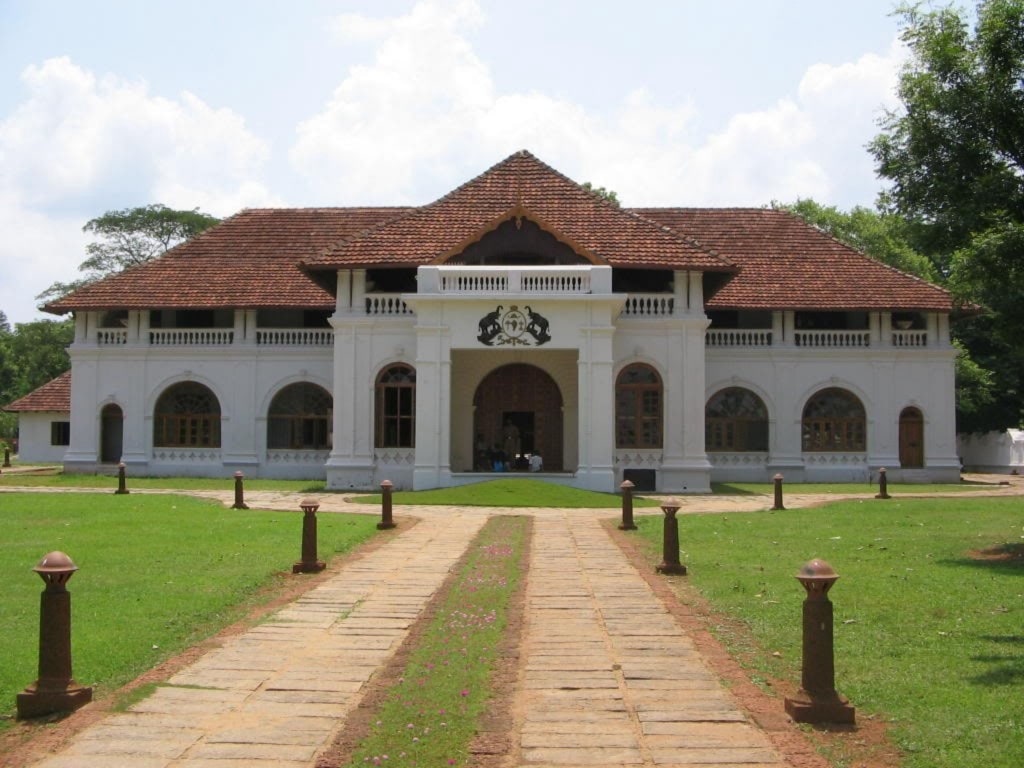
Mattancherry Palace Photo by Jksha on Wikimedia Commons, licensed under CC BY-SA 4.0
Mattancherry Palace, on the eastern side of the peninsula, was presented to Raja Veera Kerala Verma as a gift from the Portuguese in 1555. Over a century later, it was renovated by the Dutch, hence its alternative name, the Dutch Palace.
This unassuming-looking, cream-colored building with a red-tiled roof conceals magnificent murals dating back to the 17th century which are astonishing in their color and detail.
The murals depict scenes from some of the great Indian epic stories, including Ramayana and Mahabharata, as well as poems. You’ll also see exhibits in the palace including ceremonial spears, swords, and daggers, as well as the original city plans for Kochi drawn up by the Dutch.
Visit the Indo-Portuguese Museum
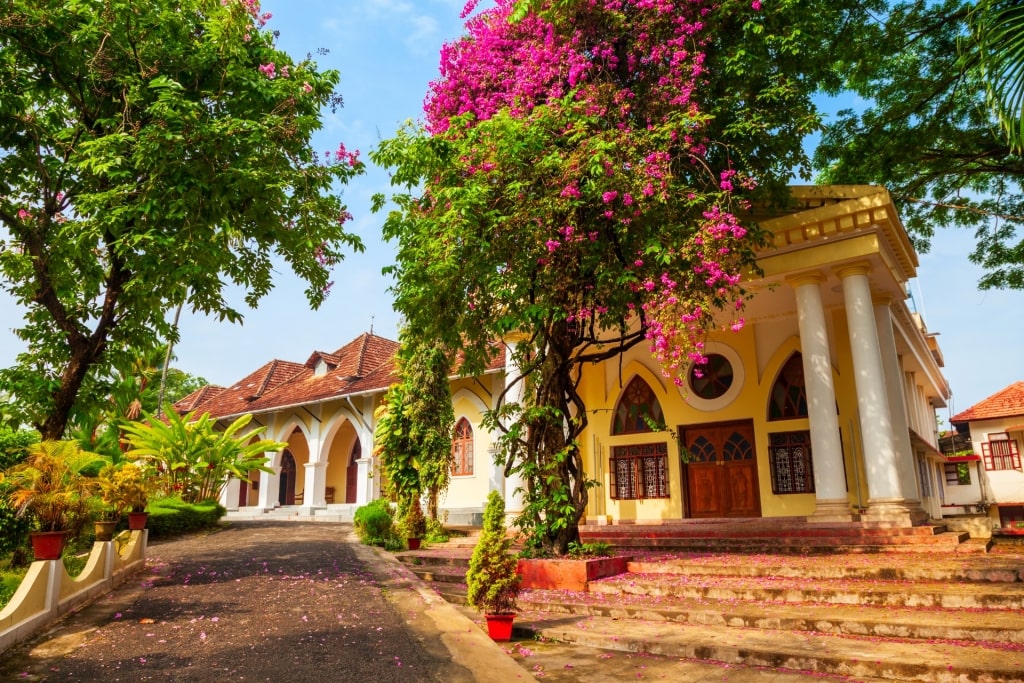
Indo-Portuguese Museum
Kochi was a Portuguese colony between 1503, when Vasco da Gama first arrived, and 1663. Piece together some of the puzzle of the region’s historical links with Portugal at this intriguing museum, located on the serene grounds of the bishop’s palace in Fort Kochi.
You’ll see the remnants of a 16th-century teak altar, as well as processional crosses, sculptures and vestments. You can also learn about the establishment of the Portuguese settlement in Kochi in the 16th century.
Step Inside the Paradesi Synagogue
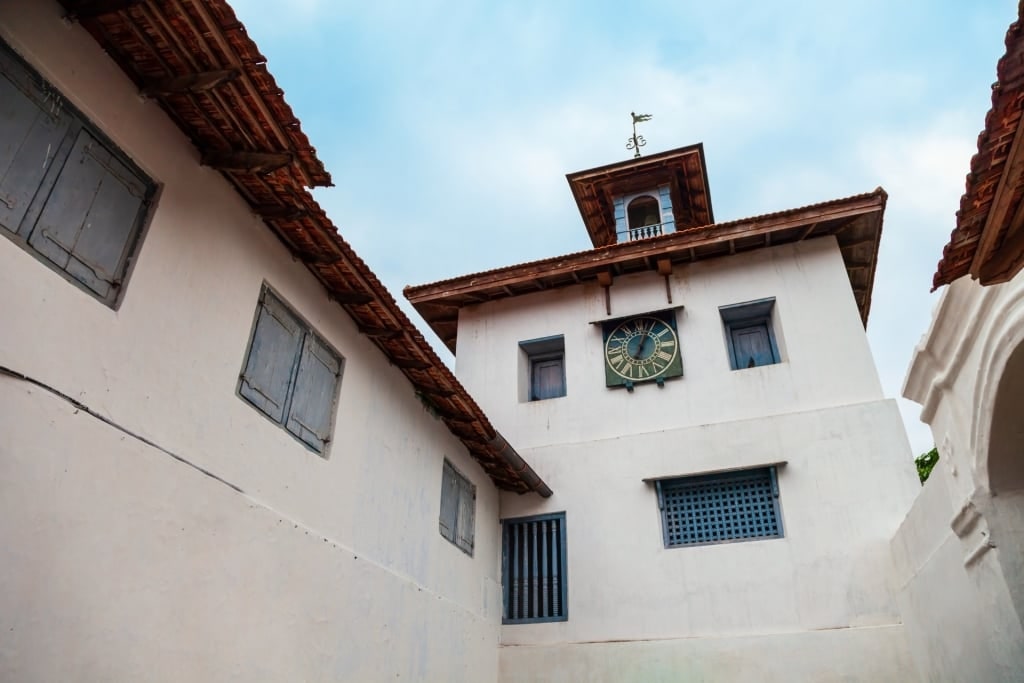
Paradesi Synagogue
Mattancherry once had a sizable Jewish population, and although most emigrated to Israel in the 1940s, their legacy remains in this beautiful synagogue. The current structure dates back to 1664 when the original building was reconstructed by the Dutch.
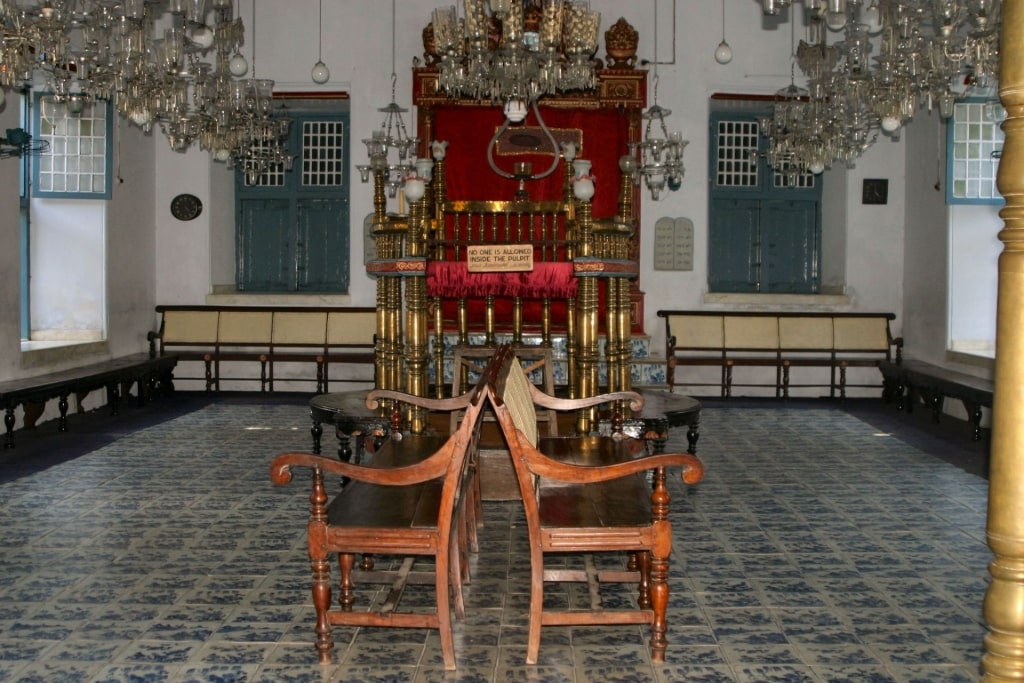
Paradesi Synagogue Photo by Brian Snelson on Wikimedia Commons, licensed under CC BY 2.0
There’s much to admire, from intricately patterned Chinese floor tiles from the 18th century to carved wooden benches and delicate chandeliers. A hand-knotted oriental rug was a gift from Haile Selassie, Ethiopia’s last emperor. The synagogue is still used for worship today.
While you’re in Jew Town, as this area is still known, head for the Ethnic Passage for eye-popping antiques shopping, most of it concentrated on this one road. Look out for carvings, sculptures, paintings, ornate doors and window frames, and generally covetable objets d’art.
Admire the Art in Santa Cruz Basilica
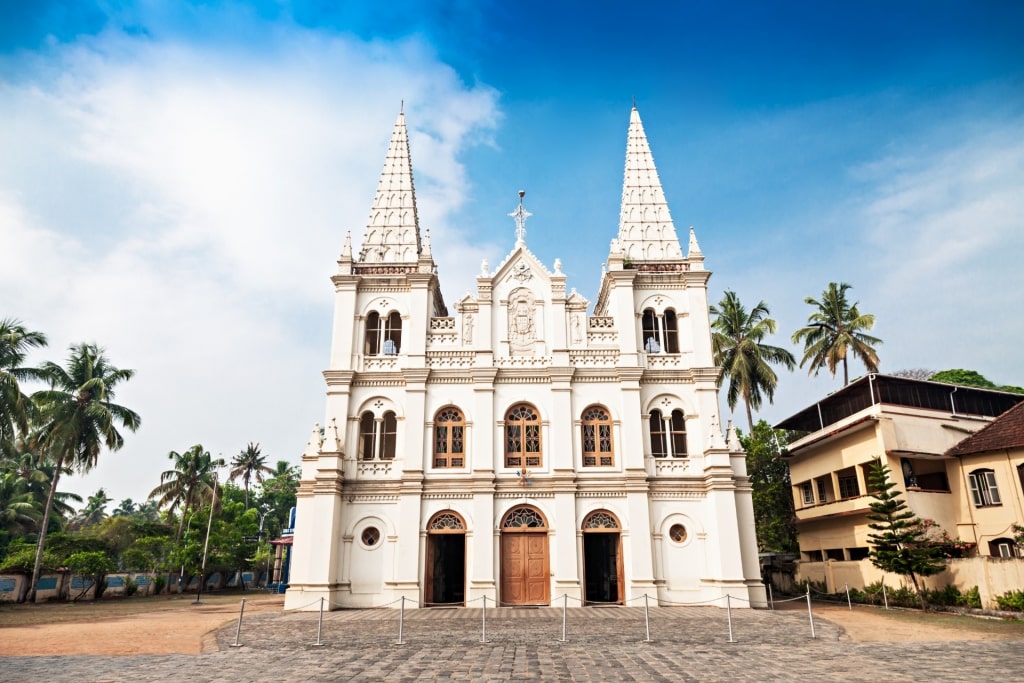
Santa Cruz Basilica
Christianity is the third-most practiced religion in Kerala, with some 18 percent of the population, a high amount for India, declaring themselves active worshippers. Santa Cruz is one of the most important churches in India and serves as the cathedral of the Kochi diocese.
Constructed in 1902, the impressive neoclassical basilica is built on the spot where, in the 16th century, the Portuguese had a church that was later pulled down by the British Raj.
The church is an imposing, cream-colored structure with twin spires and a gothic-style interior in pastel shades, with stained glass windows and intricate frescoes and murals.
Look out for the painting of the Last Supper, which is modeled on the original by Leonardo da Vinci, housed in Milan, Italy.
Try an Ayurvedic Treatment
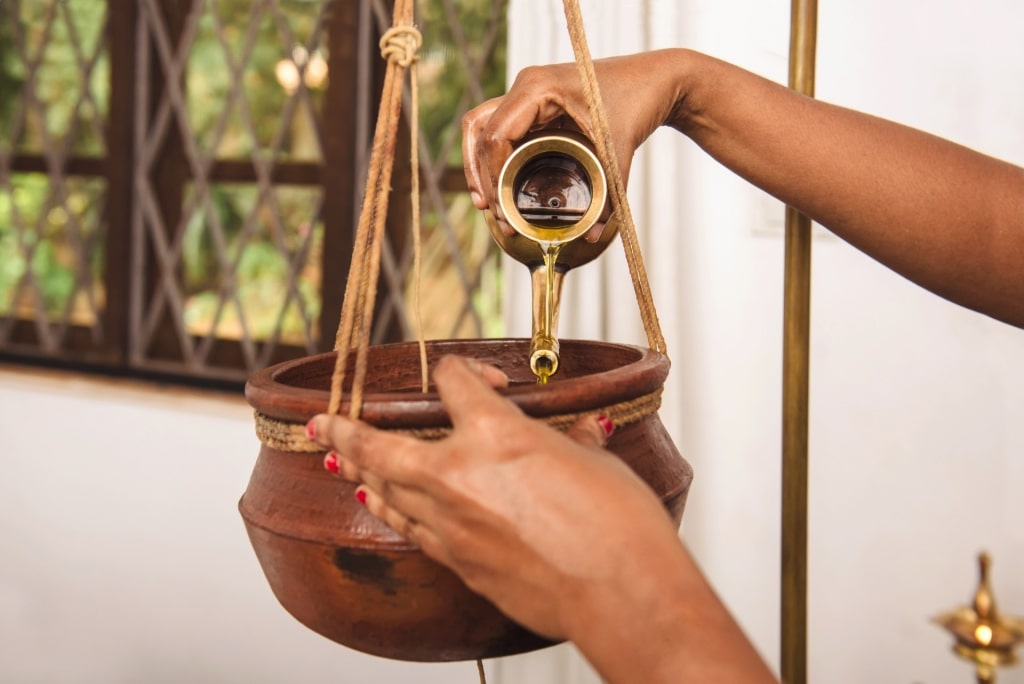
Ayurvedic massage oil
Fort Kochi has numerous day spas where you can enjoy an introduction to the ancient healing art of Ayurveda, which has been practiced in India for some 3,000 years. Experiencing it is one of the best things to do in Kochi.
Ayurvedic massage is quite energetic. You’ll be treated with an herbal oil appropriate to your body type, and enjoy pressure from the therapist’s fingertips, hands, elbows and forearms. Be prepared for a lot of oil.
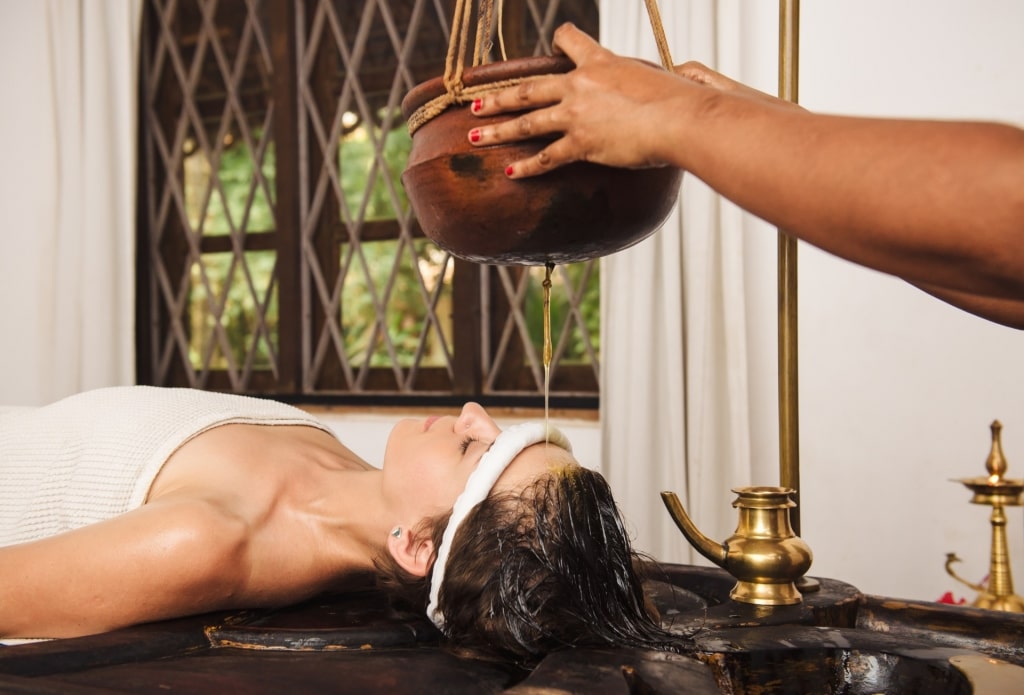
Shirodhara massage
For the ultimate in bliss, and even more oil, ask for Shirodhara. You lie back and close your eyes while warm, medicated herbal oil is trickled gently over your forehead and into your hair.
The treatment is often combined with a head massage and induces a state of deep relaxation; prepare to feel a little spaced out afterward, but in a good way.
Learn a Martial Art
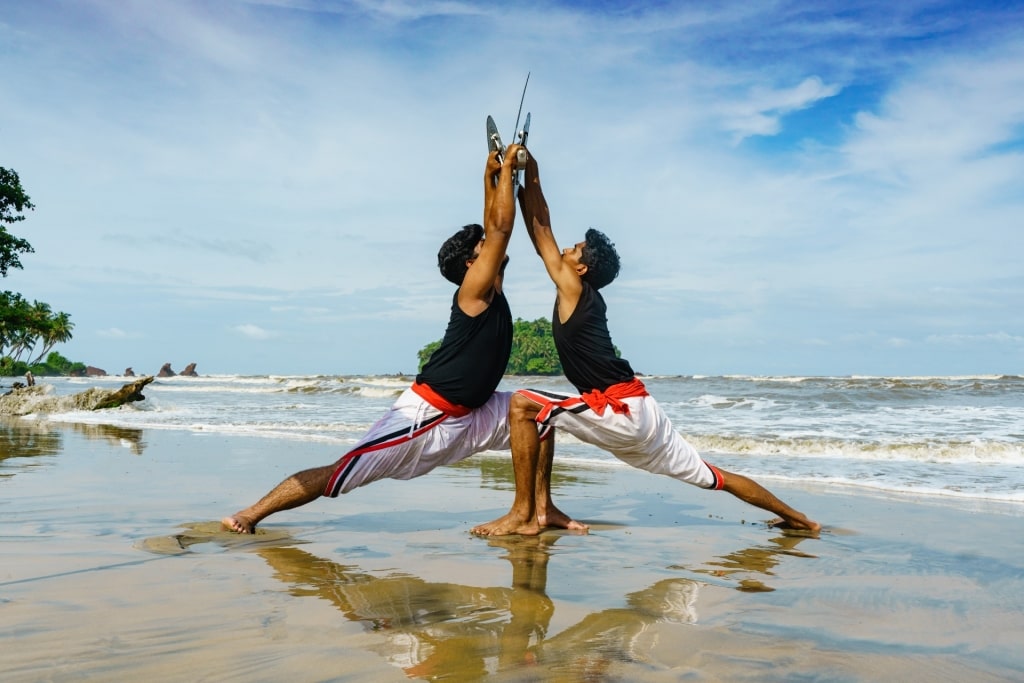
Kalaripayattu
Visit a local Kerala martial art center where you’ll discover Kerala’s 3,000-year-old martial art tradition, Kalaripayattu. This athletic art form was designed for the battlefield but looks almost like a dance, thanks to its grace and choreographed moves.
Practices from yoga to Ayurveda, healing techniques, and other rituals are incorporated, although Kalari, as it’s known, is essentially about fighting. The practice incorporates kicks, strikes, and use of weapons, and is available to all castes and genders.
It’s a full-contact martial art, but a beginner’s lesson will just teach you a few basics, so you should depart unscathed.
See a Kathakali Dance
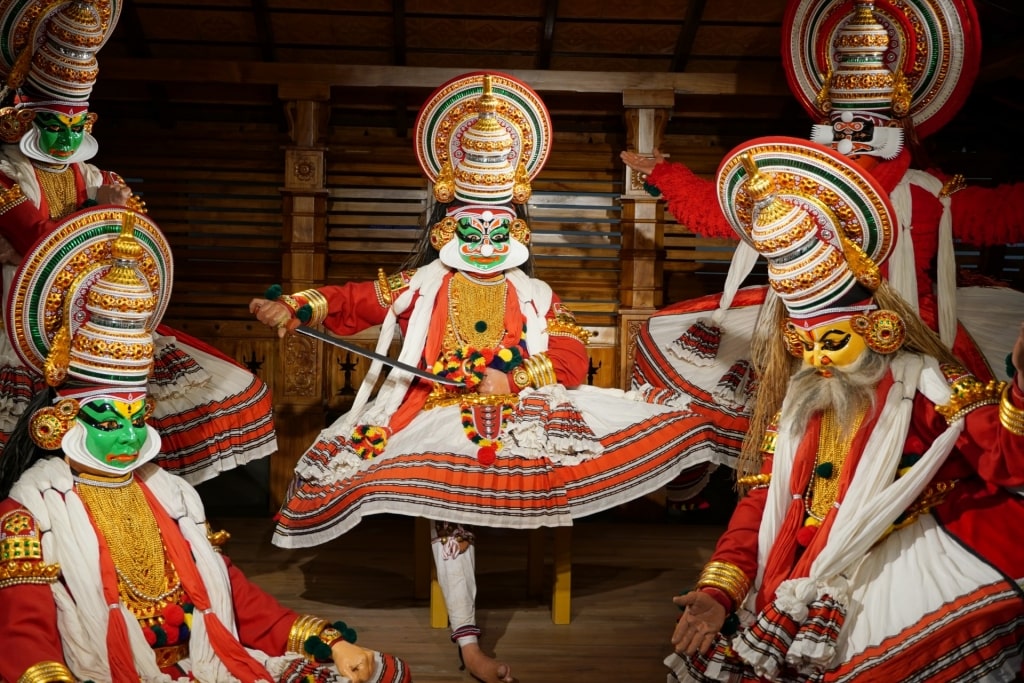
Kathakali dance
Kathakali is a tradition of dance, pantomime, and storytelling that has thrived in Kerala for more than 300 years, although its roots go back many more centuries previously. Attending a performance is one of the classic things to see in Kochi.
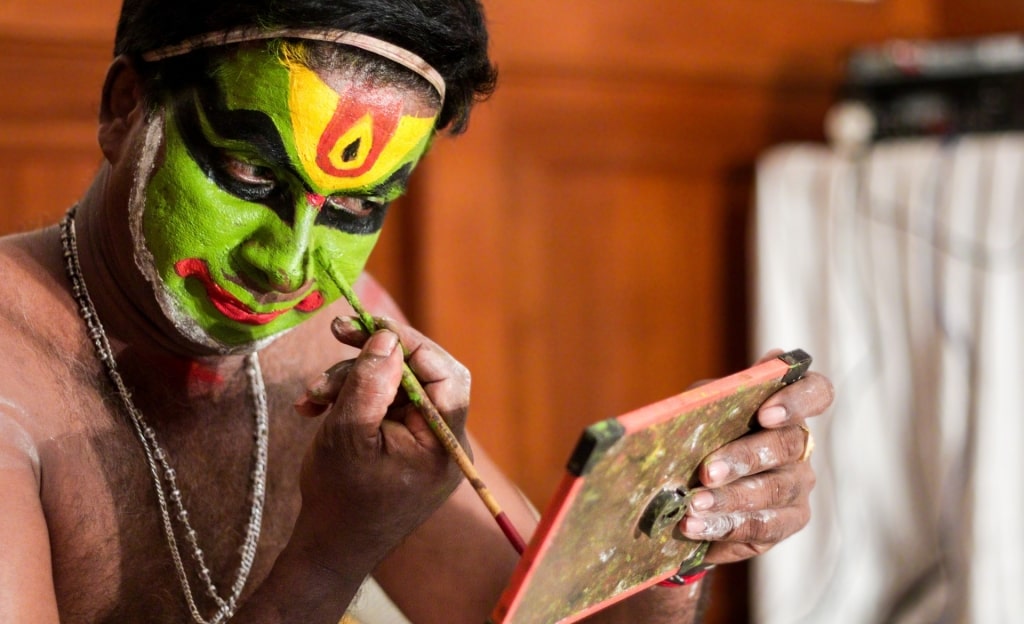
Kathakali dance
Knowing a bit of background helps understand this complex art form. The dancers train for years, learning astonishing muscle control of the face, as expression is everything in these reenactments of the great Indian sagas.
Costumes and makeup are wildly elaborate. The characters sport face paint that tells the audience whether they are a villain, a hero, a superhuman monkey, a hunter, or a demon.
You’re not especially expected to follow the story, but just lose yourself in the performance. If you find a little Kathakali goes a long way, consider the fact that what you’re watching is an extract—the full-length performances are designed to start at dusk and continue till dawn.
Gaze at the Artifacts of the Kerala Folklore Museum
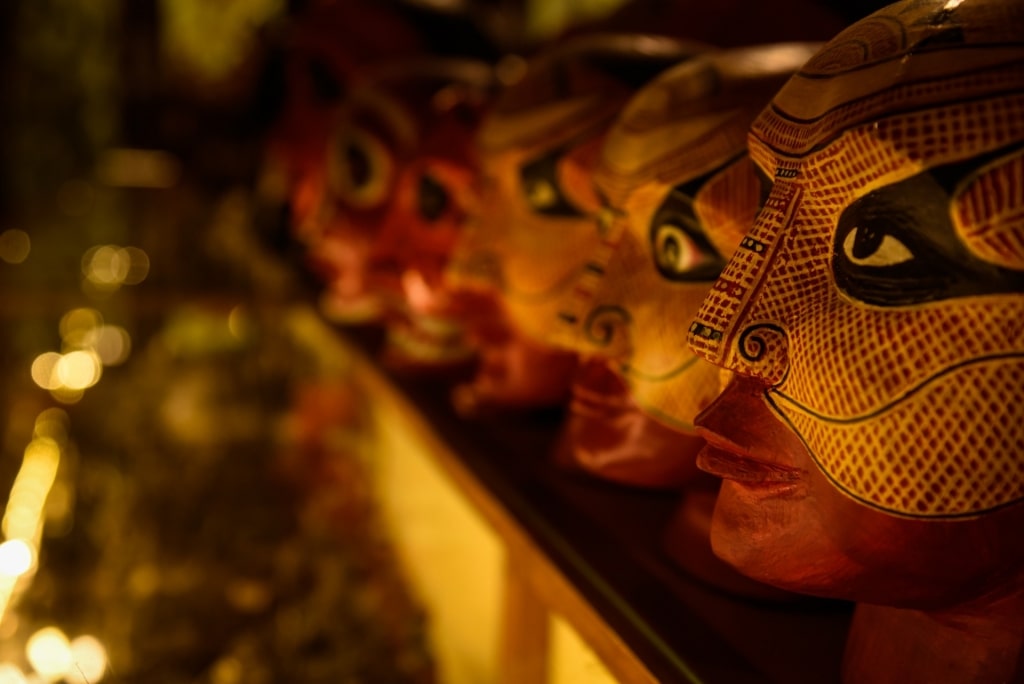
Kerala Folklore Museum
Take a taxi or tuk tuk to Thevera, a suburb of Ernakulam, to visit the enchanting Kerala Folklore Museum. The collection, which was founded by an antiques dealer, is housed in a grand old wooden house and includes more than 6,000 artifacts spread over three floors.
Lose yourself in all this beauty as you wander through exhibits of jewelry, sculpture, ancient masks, terracotta pots and figures, glorious old paintings, Christian relics and daggers. On the top floor, there’s a beautiful theater where kathakali performances are sometimes held.
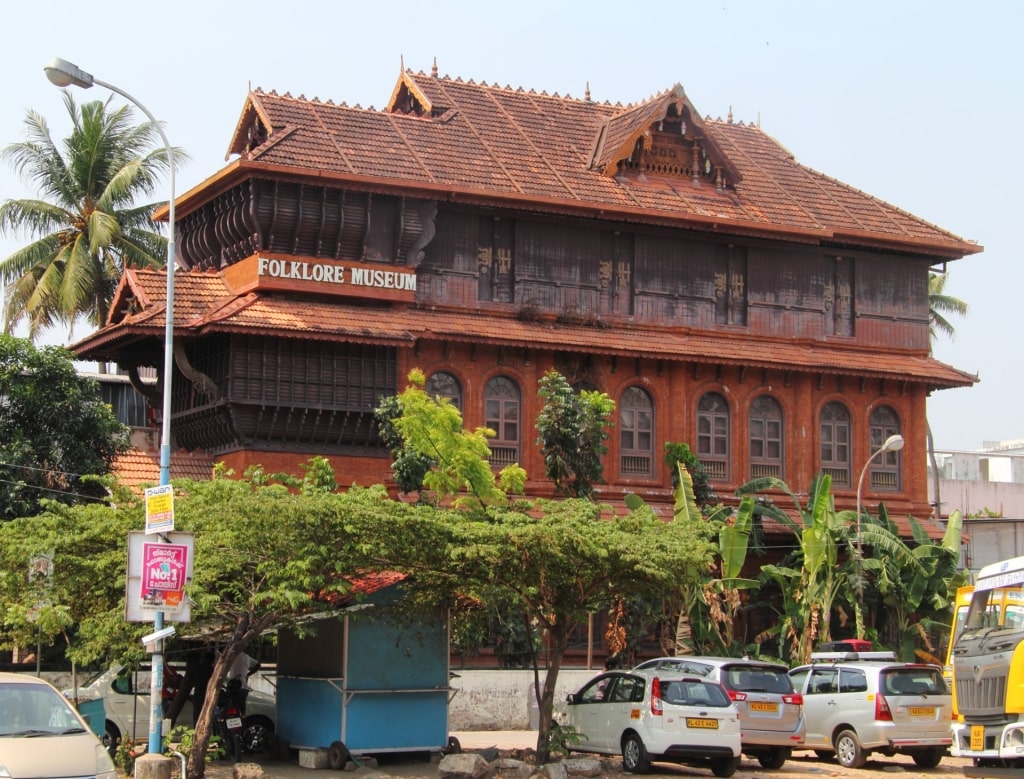
Kerala Folklore Museum Photo by Rabe! on Wikimedia Commons, licensed under CC BY-SA 4.0
Attached to the museum is an antiques shop, where you can buy artifacts from all over India, complete with a certificate of provenance. There are textile and antique jewelry stores, an art gallery, and an ethnic handicraft section where you can buy the work of local artists.
After your visit, stop at the cute little coffee shop, the Spice Art Café, where there’s a display of ancient kitchen equipment and vintage crockery as well as a menu of local snacks, spiced treats, tea, and coffee.
Cruise the Kerala Backwaters
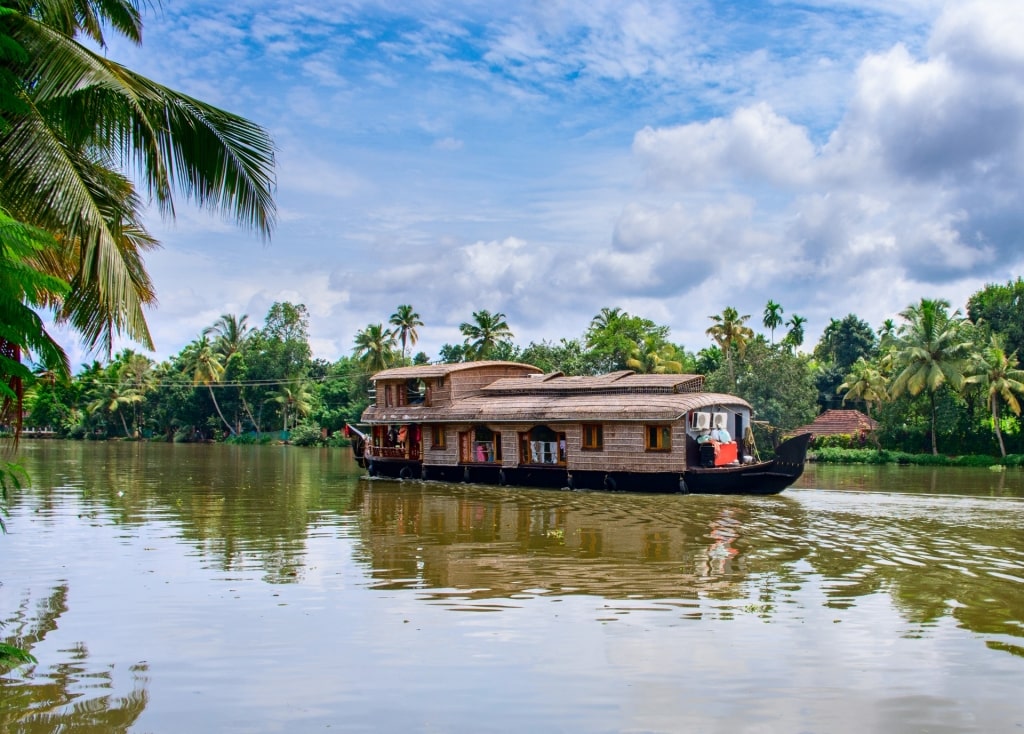
Kerala Backwaters
The port town of Alappuzha is just 30 minutes’ drive from Kochi and is the gateway to the Kerala backwaters. One of the top things in Kochi is to cruise on a kettuvallam, a converted rice barge with a thatched roof. You’ll see hundreds of these around Alappuzha, moored along the green banks of the canals.
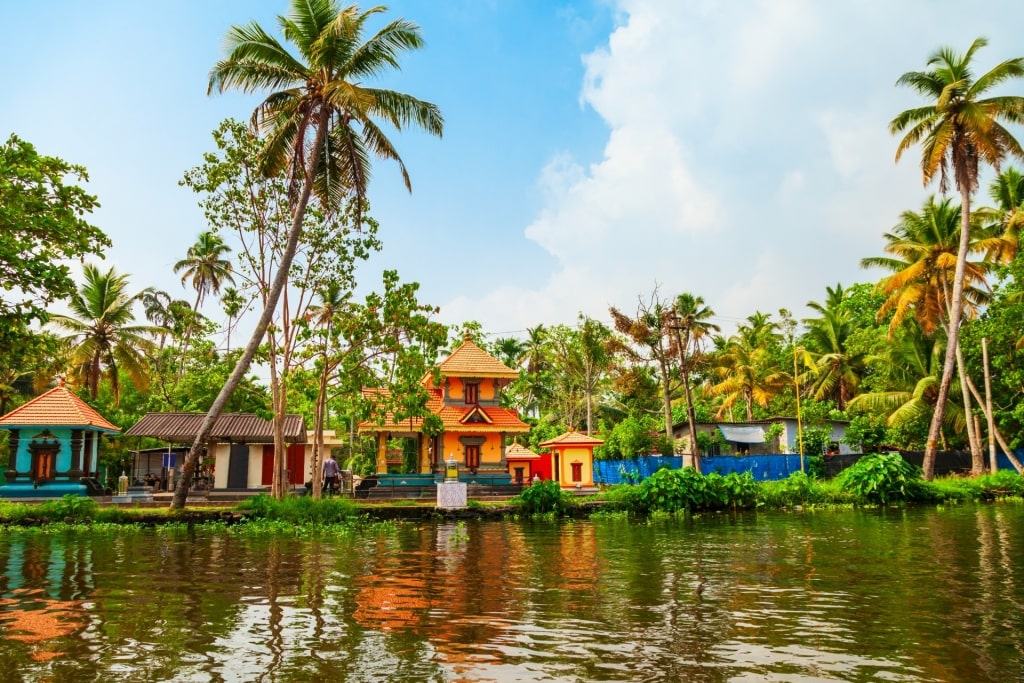
Kerala Backwaters
A day trip takes you along languid waterways lined with tall coconut palms, emerald paddy fields stretching into the distance, misty hills on the far horizon. You’ll pass waterside villages where kids run along the embankment to greet you and women hang brilliantly colored saris out to dry after doing their laundry in the water.
If you have lunch on board, you’ll learn how Keralan cuisine differs from that of other areas of India; sauces are based on coconut and spices like turmeric, ginger and black pepper, while tropical fruits are abundant in this lush landscape.
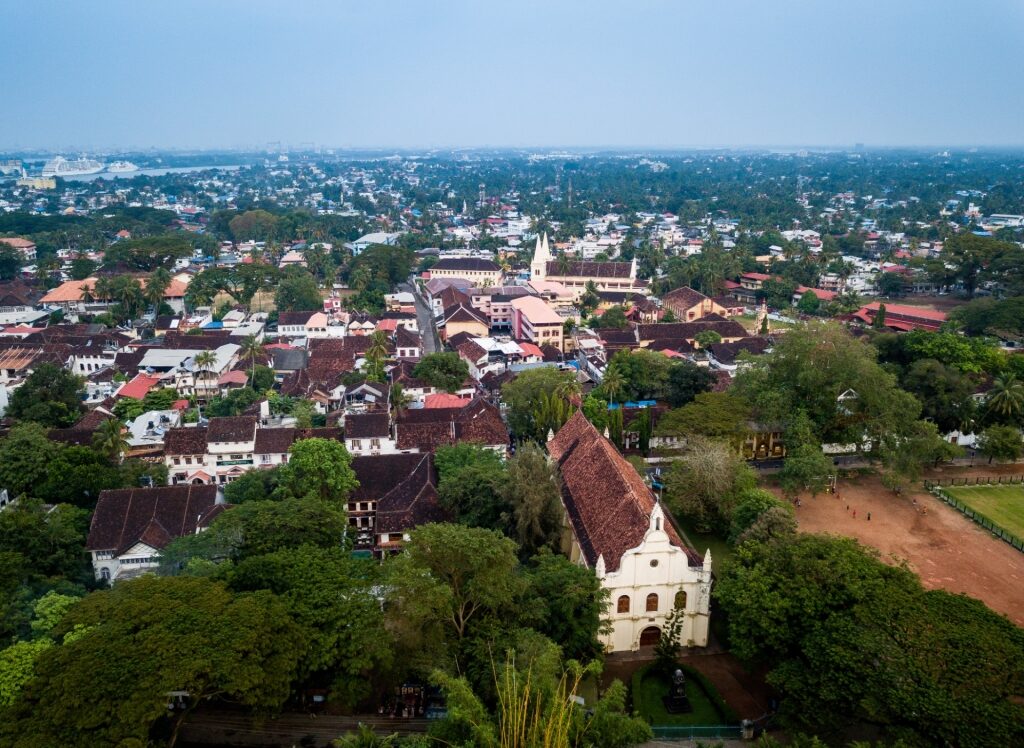
Kochi
Ready to discover the colorful history and tropical landscapes of Kochi and beyond? Browse our cruises to Kochi and book your next vacation today.
